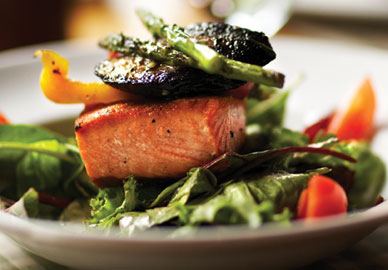The state Department of Health, the Board of Health and the Food Safety Advisory Council have been working on a revision to the retail food rule (Chapter 246-215 WAC). Thank you for the comments you’ve provided to so far throughout the process.
[expander_maker id=”1″ more=”Read more” less=”Read less”]
The department continues to request your assistance and are seeking your input on several provisions in the current draft that may increase the cost of doing business in our state.
Please help the state Department of Health estimate the potential cost to your business (or businesses you represent) by reviewing the following questions and providing your thoughts by September 4, 2019. Please skip any question that doesn’t apply to you and feel free to include any comments or questions you have. In your response, please also include your name and contact information so the department may contact you if needed. You may email your responses to " data-wpel-link="internal">Susan Shelton, food safety program public health advisor, Washington State Department of Health.
You may also contact Washington Hospitality Association State Government Affairs Senior Manager, " data-wpel-link="internal">Samantha Louderback, if you have any questions about any of the questions.
1. Section: WAC 246-215-02110 Duties- Food protection manager certification
Summary: The draft rule will require each food establishment to have one of their person in charge (PIC) obtain a certified food protection manager certification. The certification exam is provided by five national service providers. The department estimates a training and testing time of 8-20 hours for a person in charge to receive certification.
- Question 1: Do any of your PICs have the certification now?
- Question 2: What is the hourly rate of your managers that serve as your person in charge?
2. Section: WAC 246-215-3290 Original containers and records- Shellstock maintaining identification
Summary: The draft rule will require food establishments that sell fresh shellstock (oysters, clams, mussels, and scallops in their shells) to put the first and last dates of sale on the shellstock tags. The current rule already requires vendors to put the last date of sale on the tags, but the new rule will require vendors to also put the first date on the tag when they begin using a bag of shellstock.
- Question 1: How much longer will it take for you to write the first date of sale on a tag when you open the bag?
- Question 2: On a monthly basis, how many bags of shellstock do you open?
3. Section: WAC 246-215-03348 Preventing contamination from equipment, utensils, and linens—Refilling returnables
Summary: The draft rule would allow food establishments an option for consumers or employees to refill consumer-owned containers if the food establishment has a written plan for a contamination free process. A contamination-free process does not introduce physical, biological, or chemical substances to food. This includes preventing consumer-provided containers from contacting unpackaged food or shared serving utensils.
- Question 1: Would you be willing to allow consumers to use their own containers?
- Question 2: Would you be willing to allow an employee to fill a consumer-owned container?
- Question 3: How long would it take for you to develop a written plan/procedure for a contamination-free process?
- Question 5: What is the hourly rate of the person who writes the procedure?
- Question 6: How much would it cost to educate consumers on how to follow contamination-free procedure?
- Question 7: How long would it take to train staff?
4. Section: WAC 246-215-03400 Cooking-Raw animal foods
Summary: The draft rule raises the cooking temperature for ground meat such as hamburger and sausage to 158°F. Food establishments that want to continue using 155°F will have to hold that temperature for 17 seconds and will need advance approval for their procedure.
- Question 1: Do you believe that raising temperature to 158°F will negatively affect the quality of your ground meat dishes?
- Question 2: Would you prefer to keep cooking ground meat to 155°F with a 17 second hold time rather than raise the cooking to 158°F?
- Question 3: If applicable, how long will it take you to write a procedure for showing how your employees will cook to 155°F and hold for at least 17 seconds?
5. Section: WAC 246-215-03526 Ready-to-eat, Time/Temperature control for safety food, Date Marking
Summary: The draft rule will require food establishments to mark a 7-day use-by date on cold, unpackaged, ready-to-eat, potentially hazardous foods (such as opened bags of lettuce, cut tomatoes, cooked and cooled vegetables, opened containers of milk, and cooled meats). If this rule is adopted, food must be served or discarded by the use-by date.
- Question 1: Does your food establishment currently mark food in the refrigerator with a use-by date of 7 days or less?
- Question 2: What does your food establishment currently do with food that is past the use-by date?
- Question 3: If this rule is adopted, how much would it cost you to train your staff and to purchase stickers or other marking method?
- Question 4: How much staff time do you think it would take your staff to mark applicable refrigerated foods on an average day?
6. Section: WAC 246-215-06570 Prohibiting animals
Summary: The draft rule would allow food establishments, under a written plan, to have dogs in outdoor dining areas if they are under control of the owner.
- Question 1: Would you want to allow pet dogs in outdoor areas at your food establishments?
- Question 2: If DOH provides a checklist of the requirements (such as keeping dogs out of the indoor areas, preventing food preparation in the outdoor area, and preventing employees from touching the dogs), how long would it take you to write the plan?
- Question 3: What is the hourly rate for staff writing the plan?
- Question 4: How long will it take to implement a plan that demonstrates dogs would be restricted from areas where they would pose a food safety risk?
7. Section: WAC 246-215-03620 Consumer advisory—Consumption of animal foods that are raw, undercooked, or not otherwise processed to eliminate pathogens
Summary: If a restaurant receives fresh fish that are a parasite risk, such as unfrozen wild-caught salmon or halibut, and wants to offer it partially-cooked (below 145°F), they are currently not allowed to do so. The draft rule would allow a restaurant to serve partially-cooked fish if they use a modified consumer advisory on their menus to warn customers of risk of parasitic illness.
- Question 1: Do you want to serve fresh (unfrozen) wild-caught fish partially-cooked?
- Question 2: If yes, how much would it cost you to revise or print the new consumer advisory insert or cost of new menus?
8. SPECIFIC TO MOBILE FOOD UNITS. Section: WAC 246-215-09160 Required postings—Business name and operating locations
Summary: Mobile food units would be required to have adequate signs with minimum 4” letters to inform people about business identity.
- Question 1: Do you have your business name on the outside of your mobile food unit in letters at least four inches tall?
- Question 2: If you have to put your business name on the outside of your mobile food unit, how much would it cost?
9. SPECIFIC TO DONATED FOOD DISTRIBUTING ORGANIZATIONS. Section: WAC 246-215-09400 Requirements and exemptions
Summary: Donated Food Distributing Organizations will have to provide a copy of their 501(c) IRS determination letter and notify the regulatory authority of its planned operation annually. Non-profit organizations should already have a valid 501(c) letter from IRS to operate in this tax status.
- Question 1: Do you currently update your 501(c) letter annually?
- Question 2: How long does it take you to update your 501(c) letter?
10. SPECIFIC TO DONATED FOOD DISTRIBUTING ORGANIZATIONS. Section: WAC 246-215-09430 Food labels- alternative labeling
Summary: This section will increase food labeling requirements for Donated Food Distributing Organizations if they repackage food on premises. The draft rule includes a requirement for the name and place of business of the manufacturer, packer, or distributor to be included on each individual label.
- Question 1: How often do you receive food that needs to be repackaged?
- Question 2: How do you relabel packages (e.g., label printer, by hand)?
- Question 3: How long will it take to label packages with the identity of manufacturer/packer/distributor?
- Question 4: Will you have to purchase equipment and supplies? If so, please describe.
11. SPECIFIC TO DONATED FOOD DISTRIBUTING ORGANIZATIONS. Section: WAC 246-215-09435 Record keeping- Receiving record
Summary: The draft rule changes the retention time for records for Donated Food Distributing Organizations from 30 days to 90 days.
- Question 1: Will there be an additional cost of the additional retention time for Donated Food Distributing Organizations? If so, how much? [/expander_maker]



















![[Class, May 20] ServSafe Manager, Kent](https://wahospitality.org/wp-content/uploads/2018/07/CALEND1-150x150.png)







